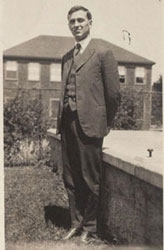Workshop at MBL Explores Past, Present, and Future of Cell Biology


A recent workshop at the MBL exploring the past, present, and future of cell biology attracted nearly 40 leading biologists, historians, philosophers, and graduate students. The workshop, “Updating Cowdry at the MBL,” was organized by Karl Matlin of the University of Chicago and Jane Maienschein of the MBL and Arizona State University through a collaborative grant stemming from the UChicago-MBL affiliation. It was the first event in an ongoing project that will lead to publication of a book on the topic.
The point of departure for the workshop was a gathering of biologists at the MBL more than 90 years ago led by cytologist Edmund V. Cowdry. Cowdry convened this group of scientists, all of whom conducted research at the MBL, with the intention of producing a volume that would examine “the cell fundamental,” recognizing that such a book could no longer be produced by a single individual and instead required contributions from multiple perspectives and fields. In 1924, General Cytology, the product of Cowdry’s efforts, was published by The University of Chicago Press.
As these biologists, including Cowdry, Edmund Beecher Wilson, Frank Lillie, Thomas Hunt Morgan, and the other authors acknowledged, cell biology in 1924 was only in its infancy. Cytologists sought to find ways to describe details inside cells, including sorting out which features are important, and physicochemical and physiological processes remained relatively mysterious. In many ways, despite the growing number of researchers studying cells and a recognized need to understand the most fundamental cellular structures and processes, the cell remained a frontier for exploration.
In the subsequent decades, cell biology has developed far beyond what Cowdry could have imagined. New technologies, such as electron microscopy and cell fractionation, enabled cell biology to become a molecular science, while new disciplines, including molecular genetics and systems biology, have expanded the scope of possibilities. More recently, the ability to examine molecular events in living cells using fluorescent probes, and the capability to model these events using computers make it possible to extend the age-old search for mechanisms in biology into the realm of emergent structures and functions dictated by dynamic properties.
All of these topics were represented at the October 23-24 workshop, with historians framing the past, cell biologists describing the present, and philosophers analyzing the evolution of epistemic strategies accompanying the maturation of cell biology into a 21st-century science.
The next steps in the project include a moderated discussion of ideas emanating from the workshop with the goal of identifying new frontiers and paths of exploration. This will result in a list of topics for deeper exploration at a second workshop to be held at the MBL in October 2015, and leading to the anticipated book.